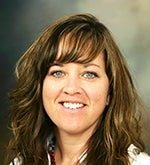Guest Column: Have conversation about what’s in alcohol
Published 10:03 pm Wednesday, April 12, 2017
Guest Column by Jenine Koziolek
We’ve been trying to eat healthier, and as a result we have been reading ingredients on our food labels in our household. It’s always interesting and somewhat of a contest for our family to start by trying to first guess what is in the product and then to go to the ingredient list and pronounce all of the ingredients listed. Typically, the food products that are not organic or natural have a fairly long list that we can say, “of course” and “yep, I figured that was in there,” but as we continue to read down the list, the words get harder to pronounce, and often we are stumped by what it is we are reading and eating. The discussion then leads to wondering how we are justifying putting something into our bodies that we can’t necessarily make sense of.
I know this happens with products outside of food as well. We can probably say the same thing about medical prescriptions, of course those typically come with a dandy side effect list that warns of us of the potential dangers. We may even have a set of cleaning products under our kitchen sink that have chemicals that we struggle to understand what exactly they are (remember the poison control stickers we once had for those or the latch we put on those cabinet doors so young children couldn’t access those potentially poisonous chemicals?).

Jenine Koziolek
April is Alcohol Awareness Month, and I got to thinking about the ingredients in alcohol and where we learn about those, how often we are discussing this list of ingredients or potential consequences of ingesting the substance and what a young person thinks when they pick that alcoholic drink out to consume. Here’s my guess on how it goes based on previous observations:
1.) Friend encourages another person to take a sip of their alcoholic beverage: “You gotta try it, it’s so good.”
2.) Person may or may not ask what’s in the drink and how it may affect them. They may even say “no” at first to the offer.
3.) If they continue to engage in the environment that involves alcohol, they are more likely to take the drink.
4.) They may or may not like it, but if they are in this environment and encouraged to try it again, it’s likely they will.
5.) By experimenting with others drinks, they find one they do really enjoy. They still aren’t entirely sure what’s in it or what could potentially happen to them by consuming it. But when they go to purchase their own supply, they request this particular drink they have found to like.
OR
1.) Parent has alcoholic beverage in the special cabinet or refrigerator.
2.) Friend comes over to hang out for the evening and parents are gone.
3.) “Your parents will never know” as they creatively consider how to take the beer from the fridge or the alcohol from the cabinet.
4.) Alcohol consumption occurs.
We know that the legal age to consume alcohol in the United States is age 21; however, statistics and stories also make it known that far too often young people are succumbing to their curiosity, peer pressure or a means to cope with stress by consuming alcoholic beverages prior to the legal age. We also know that consuming alcohol prior to the age of 21 increases the risk of addiction and harming that still developing brain.
We can help prepare them. Have the conversations with them about what alcohol is, how it affects the brain/body, why young people are attracted to use it, what the potential consequences and why you don’t want them to consume alcohol prior to the age of 21 (and in moderation thereafter). Providing them with the skills to navigate their environment when they are faced with the opportunity to consume alcohol is critical and does make a difference!
I may not go into all of the details of the ingredients in alcohol in our home, but I definitely will make it a point to discuss with my family the importance of making health decisions about alcohol consumption. Empowering them with the skills and knowledge is a terrific tool I have to keep them safe and protected as they face the challenges of growing up.
Jenine Koziolek is a licensed alcohol and drug counselor and is employed with Fountain Centers, a Mayo Clinic Health System program for substance abuse and addiction as the outreach specialist. She is also the co-chairwoman for Freeborn County Partners in Prevention.

